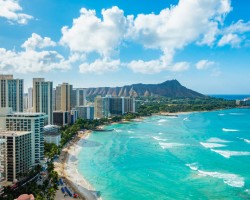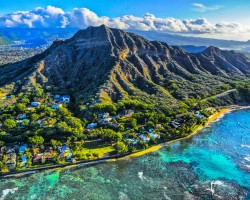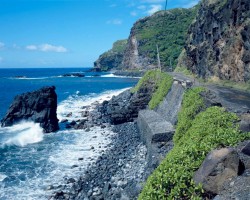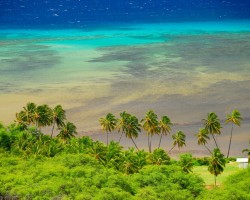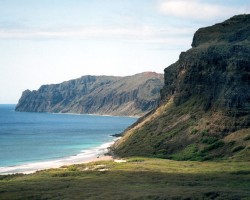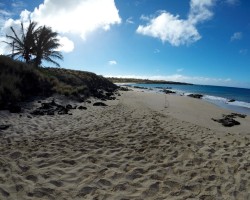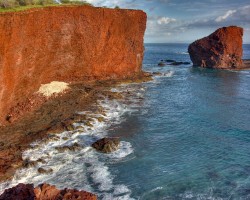Best time to go to Hawaii for a perfect weather and where to go?
When is the best time to go to Hawaii?
The undisputed paradisiac image of the Hawaiian islands is welcoming all year long; choosing a time that is more conducive than others is having unlimited possibilities. Actually, everything depends on the preferences of the tourists or visitors. Some travelers prefer to relax in Hawaii during the winter, from December to February. Not only can they get away from the prevailing cold in their country, but they also have the opportunity to attend the most prestigious surfing competition, which is held in December. This competition is know as the Quiksilver in Memory of Eddie Aikau Big Wave Classic. The waves can effectively reach at least 6 meters high. Between late March and early April is when the largest competition of Hula is held, a cultural event that is popular with tourists and takes place throughout the Merrie Monarch Festival. During this period, Hawaii sees an increase in crowds of cultural discovery enthusiasts who have also come to enjoy the perfect weather for sunbathing. In the months of July and August, underwater visibility is just perfect. With calm seas, this is a renowned time for both underwater diving as well as the practice of windsurfing.
Where and when to go based on the weather?
Big Island
Hilo, Pahala, Captain Cook...
Kauaʻi
Niihau, Kekaha, Kilauea...
Maui
Molokai, Kahului, Hana...
O'ahu
Honolulu (Oahu), Waianae, La'ie...
To get all the information about the climate and weather in Hawaii for a specific month, click on the corresponding link below:
Hawaii in january Hawaii in february Hawaii in march Hawaii in april Hawaii in may Hawaii in june Hawaii in july Hawaii in august Hawaii in september Hawaii in october Hawaii in november Hawaii in december
Best time to travel to Hawaii by cities
Climate and Weather in Hawaii
The Hawaiian archipelago has a pleasant subtropical climate throughout the year. There are two main seasons, the summer and the winter while the weather is delightfully refreshed by the continued presence of trade winds.

The Hawaiian Climate During the Summer
Also called “Kau” on the Hawaiian archipelago, summer extends between May and early October. This is known as the hottest and sunniest season of the archipelago. The weather is particularly beautiful on the west coast, as in both Honolulu and Kahului which are located in the Islands of Maui. On the contrary, the north-eastern coast is much less sunny. In addition, rain showers the area regularly throughout this period. Beware though, because summertime is also known as hurricane season within the Hawaiian archipelago, however rare these may be.
The Hawaiian Archipelago Climate During the Winter
Also known as “Hooilo” in Hawaii, winter is the coolest and most humid season in the archipelago. The climate in Hawaii throughout this period is marked by frequent and very heavy rainfall. The weather is also cloudy, though the sun manages to appear every day. Note that during the winter, there are also a few tropical storms. Further note that on the Island of Kaua'i, one can find what is known as the wettest area on the planet along with the famous Mount Waialeale.
Temperatures and rainfall in Hawaii
On these 3 graphs, we present the evolution of temperatures of Hawaii and month-by-month rainfall for the cities of Honolulu (Oahu), Captain Cook, Hana, Hilo and Kahului, as well as the month-by-month sea temperature for coastal cities.
Average price for flights to Hawaii
A return flight between Sydney and Honolulu (Oahu) is generally cheaper if you go in february ($ 700 on average): this is the best time for travellers on a tight budget. In contrast, you may end up paying $ 392 more for your airline ticket to Honolulu (Oahu) if you go in december.
Where to go in Hawaii?
This table allows you to see the maximum temperature for each city and our opinion on the weather month by month (see colour legend below the table).
| Cities | jan. | feb. | mar. | apr. | may | jun. | jul. | aug. | sep. | oct. | nov. | dec. |
| Honolulu (Oahu) | 77°F | 77°F | 77°F | 77°F | 79°F | 81°F | 83°F | 83°F | 83°F | 83°F | 81°F | 79°F |
| Captain Cook | 70°F | 70°F | 70°F | 72°F | 72°F | 74°F | 76°F | 76°F | 76°F | 76°F | 72°F | 72°F |
| Hana | 77°F | 77°F | 76°F | 77°F | 79°F | 79°F | 79°F | 81°F | 81°F | 81°F | 79°F | 79°F |
| Hilo | 74°F | 72°F | 72°F | 72°F | 72°F | 74°F | 76°F | 76°F | 77°F | 77°F | 76°F | 74°F |
| Kahului | 76°F | 76°F | 76°F | 77°F | 79°F | 79°F | 81°F | 81°F | 81°F | 81°F | 79°F | 77°F |
| Kekaha | 76°F | 76°F | 76°F | 77°F | 79°F | 81°F | 81°F | 83°F | 83°F | 81°F | 79°F | 77°F |
| Kilauea | 77°F | 76°F | 76°F | 77°F | 79°F | 81°F | 81°F | 83°F | 83°F | 81°F | 79°F | 77°F |
| La'ie | 77°F | 76°F | 76°F | 77°F | 79°F | 81°F | 81°F | 83°F | 83°F | 83°F | 79°F | 77°F |
| Molokai | 77°F | 77°F | 77°F | 77°F | 79°F | 81°F | 81°F | 83°F | 83°F | 83°F | 81°F | 79°F |
| Niihau | 76°F | 76°F | 76°F | 77°F | 79°F | 81°F | 81°F | 83°F | 83°F | 81°F | 79°F | 77°F |
| Pahala | 70°F | 70°F | 70°F | 72°F | 72°F | 74°F | 76°F | 76°F | 76°F | 76°F | 72°F | 72°F |
| Waianae | 77°F | 77°F | 77°F | 79°F | 81°F | 81°F | 83°F | 83°F | 85°F | 83°F | 81°F | 79°F |
| Kahoolawe | 76°F | 76°F | 76°F | 77°F | 79°F | 79°F | 81°F | 81°F | 81°F | 81°F | 79°F | 77°F |
| Lanai | 79°F | 79°F | 79°F | 79°F | 81°F | 81°F | 81°F | 83°F | 85°F | 85°F | 83°F | 81°F |
| Lihue | 77°F | 76°F | 76°F | 77°F | 79°F | 81°F | 81°F | 83°F | 83°F | 81°F | 79°F | 77°F |
| 'Aiea | 77°F | 77°F | 77°F | 77°F | 79°F | 81°F | 83°F | 83°F | 83°F | 83°F | 81°F | 79°F |
| 'Ewa Beach | 77°F | 77°F | 77°F | 79°F | 81°F | 81°F | 83°F | 83°F | 85°F | 83°F | 81°F | 79°F |
| Anahola | 77°F | 76°F | 76°F | 77°F | 79°F | 81°F | 81°F | 83°F | 83°F | 81°F | 79°F | 77°F |
| Hale'iwa | 77°F | 77°F | 77°F | 79°F | 81°F | 81°F | 83°F | 85°F | 85°F | 83°F | 81°F | 79°F |
| Hau'ula | 77°F | 76°F | 76°F | 77°F | 79°F | 81°F | 81°F | 83°F | 83°F | 83°F | 79°F | 77°F |
Legend:
perfect weather
good weather
About Hawaii
What can I do in Hawaii?
Beaches / swimming
Nature and countryside
Culture and heritage
Sports
Family travel
Crafts / shopping
Gastronomy
Nightlife
Is this weather information for Hawaii reliable?
Climate data for Hawaii has been gathered every day since January 2009. The analysis of these meteorological data for Hawaii allows us to determine the average for each month in Honolulu (Oahu), Captain Cook, Hana, Hilo, Kahului, Kekaha, Kilauea, La'ie, and 37 other cities.
So yes: this data is reliable except in cases of temporary climate disruption in the region.

